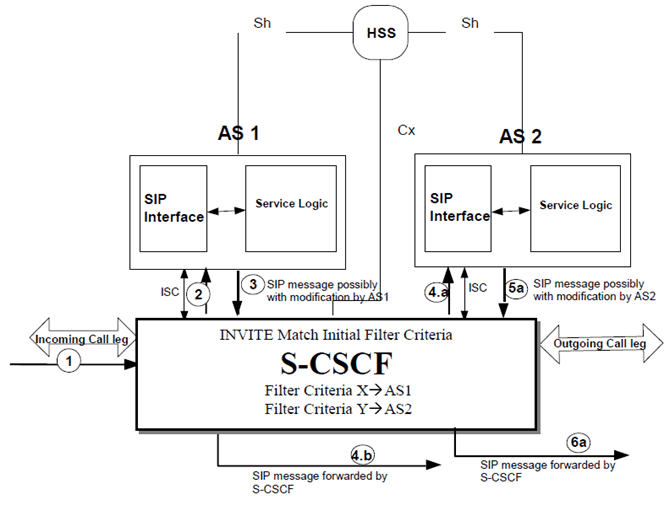Content for TS 23.218 Word version: 18.0.0
C Example for Initial filter criteria triggering p. 69
This example applies both for UE-originating and UE-terminating procedures. But we assume this is a call UE-originating procedure. User has registered with the network. Its filter criteria and addresses of the assigned application servers have been downloaded to its S-CSCF during registration via Cx interface. Also, the application server specific data may have been downloaded via the Sh interface to the application server during registration.

There is a flow example in Figure C.1:
In this example, two application servers are assigned to provide additional services to a subscriber and they are showed as AS1 and AS2 in this example.
Step 1.
User initiates a SIP session by sending a SIP initial request to its S-CSCF.
Step 2.
On receiving this request, the S-CSCF evaluates the SPTs and checks if they match the initial filter criteria X for AS1. If they match, the S-CSCF forwards this request to AS1.
Step 3.
The AS1 performs any needed service logic based on the Service Key and sends the SIP request possibly with service related modification back to the S-CSCF.
Step 4.a.
On receiving the request from the AS, the S-CSCF evaluates the SPTs and checks if they match the initial filter criteria Y for AS2. If they match the S-CSCF forwards the request to the associated Application Server AS2.
Step 4.b.
If the request doesn't match any further filter criteria, the S-CSCF forwards this request to the next hop based on the route decision.
Step 5.a.
The AS2 performs any needed service logic based on the Service Key and sends the SIP request possibly with service related modification back to the S-CSCF.
Step 6.a.
The S-CSCF checks the request sent by AS2 and finds that no initial criteria is matched, then the S-CSCF forwards this request to next hop based on the route decision.